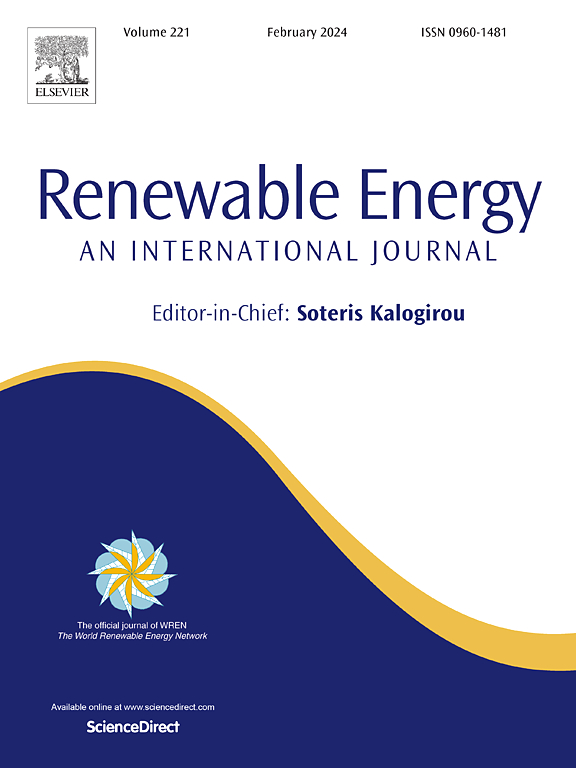双面光伏板亲水/超亲水粉尘表面凝结特性及自洁规律实验研究
IF 9
1区 工程技术
Q1 ENERGY & FUELS
引用次数: 0
摘要
粉尘沉积会显著降低双面光伏组件的转换效率。为了解决这一问题,研究了具有亲水和超亲水表面的双面光伏板的凝结特性。建立了冷凝液和颗粒的动力学模型,分析了两者的动力学相互作用。揭示了亲水和超亲水表面的自清洁机理。结果表明:亲水表面上的冷凝主要以液滴冷凝为主,有少量膜状冷凝;相比之下,超亲水表面只表现出薄膜状的凝结。液滴凝结头有轻微的自清洁能力。膜状尾部引起的热阻增加,延长了冷凝周期,从而抑制了自清洁过程。当PV粉尘积累后透过率降至65%左右时,粉尘颗粒使亲水性表面的凝结周期缩短约25%。在光伏现场粉尘沉积条件下,双面光伏组件的透过率恢复值在亲水表面和超亲水表面分别低于6.21%和2.00%。与亲水表面相比,超亲水表面表现出较差的自清洁性能。这些结果为解决双面光伏板粉尘堆积问题提供了理论支持。本文章由计算机程序翻译,如有差异,请以英文原文为准。
Experimental investigation on the condensation characteristics and self-cleaning law of hydrophilic/super-hydrophilic dusty surfaces of bifacial photovoltaic panels
Dust deposition can significantly reduce the conversion efficiency of bifacial photovoltaic modules. In order to solve this problem, the condensation characteristics of bifacial photovoltaic panels with hydrophilic and super-hydrophilic surfaces are studied. The kinetical models of condensation liquid and particles are established, and their dynamic interactions are analyzed. The self-cleaning mechanisms of hydrophilic and super-hydrophilic surfaces are revealed. The results indicate that condensate on hydrophilic surfaces primarily forms droplets condensation, with a small amount of film-like condensation. In contrast, super-hydrophilic surfaces exhibit only film-like condensation. The head of droplet condensation has a slight self-cleaning power. The increased thermal resistance caused by the film-like tail prolongs the condensation cycle, thereby inhibiting the self-cleaning process. When transmissivity drops to approximately 65 % after PV dust accumulation, dust particles reduce the hydrophilic surfaces condensation cycle by about 25 %. Under the condition of dust deposition at the photovoltaic site, the transmissivity recovery values for bifacial photovoltaic modules are below 6.21 % for hydrophilic surfaces and 2.00 % for super-hydrophilic surfaces, respectively. Super-hydrophilic surfaces exhibit inferior self-cleaning performance compared to hydrophilic surfaces. These results provide theoretical support for solving the problem of bifacial photovoltaic panels dust accumulation.
求助全文
通过发布文献求助,成功后即可免费获取论文全文。
去求助
来源期刊

Renewable Energy
工程技术-能源与燃料
CiteScore
18.40
自引率
9.20%
发文量
1955
审稿时长
6.6 months
期刊介绍:
Renewable Energy journal is dedicated to advancing knowledge and disseminating insights on various topics and technologies within renewable energy systems and components. Our mission is to support researchers, engineers, economists, manufacturers, NGOs, associations, and societies in staying updated on new developments in their respective fields and applying alternative energy solutions to current practices.
As an international, multidisciplinary journal in renewable energy engineering and research, we strive to be a premier peer-reviewed platform and a trusted source of original research and reviews in the field of renewable energy. Join us in our endeavor to drive innovation and progress in sustainable energy solutions.
 求助内容:
求助内容: 应助结果提醒方式:
应助结果提醒方式:


